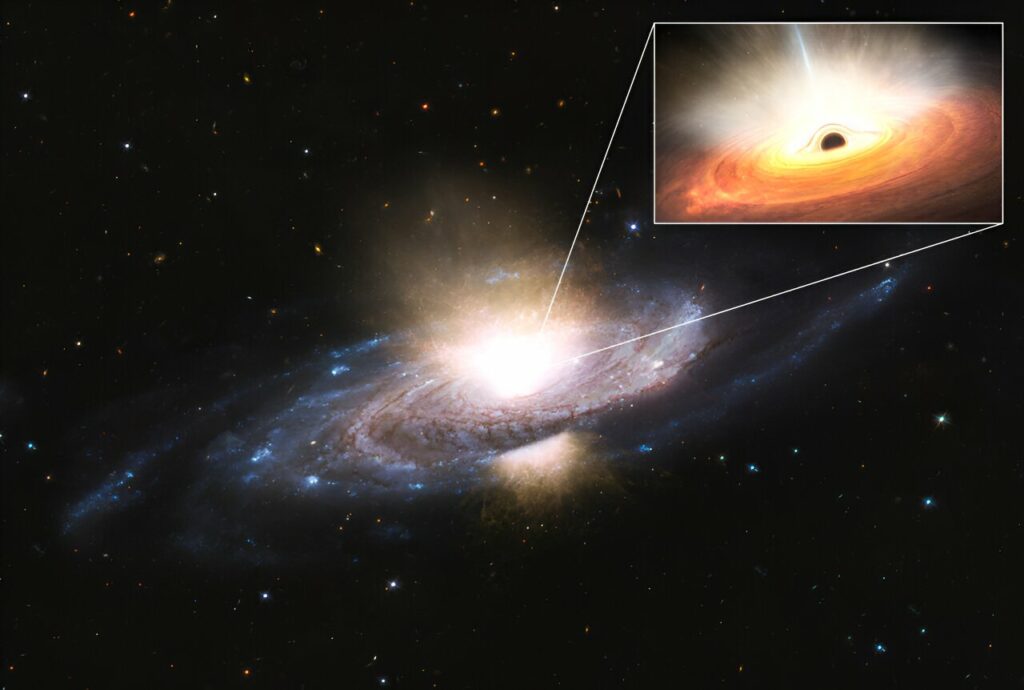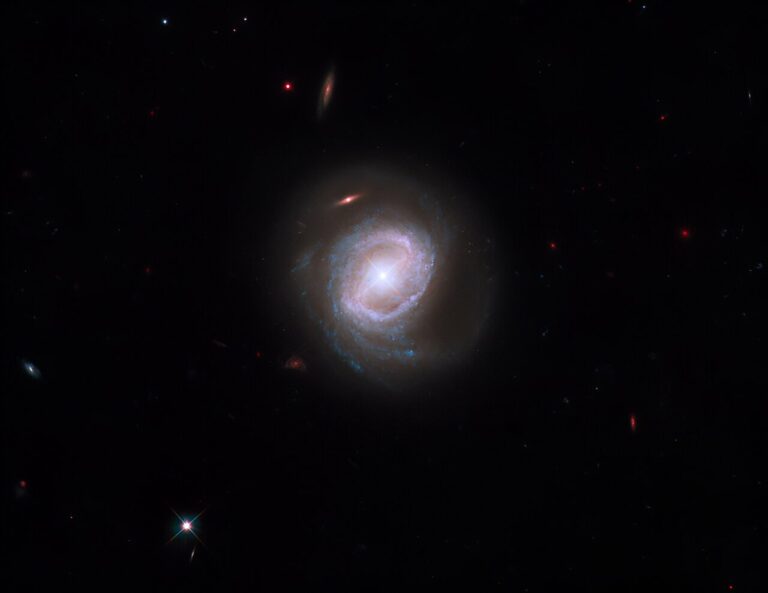XMM-Newton Detects a Black Hole Exhibiting Agitated Behavior
ESA’s XMM-Newton has observed a black hole behaving like a capricious child, causing chaos during an otherwise orderly meal. This disruptive behavior has significant consequences for the galaxy surrounding the black hole, as it hinders the formation of new stars. By studying these interactions, we gain valuable insights into the co-evolution of black holes and galaxies.
At the center of every large galaxy resides a supermassive black hole, exerting its immense gravitational pull on the surrounding gas. As the gas spirals inward, it accumulates in a flat “accretion disk” around the black hole, where it becomes heated and illuminated. Eventually, the gas closest to the black hole reaches a point of no return and is consumed.
However, black holes do not consume all of the gas that spirals towards them. Similar to a messy toddler spilling food from their plate, some of the matter surrounding the black hole is flung back out into space.
In more dramatic instances, a black hole will metaphorically flip over the entire dinner table. The gas in the accretion disk is ejected in all directions at incredibly high speeds, clearing out the surrounding interstellar gas. This not only deprives the black hole of its food source but also prevents the formation of new stars over a large area, altering the galaxy’s structure.
Until now, this ultra-fast “black hole wind” had only been observed in extremely bright accretion disks that have reached their maximum capacity. However, XMM-Newton has now detected this phenomenon in an average galaxy, which could be considered to be “only snacking.” The findings of this study have been published in The Astrophysical Journal Letters.
Undergraduate researcher Miranda Zak from the University of Michigan highlights that in the galaxy Markarian 817, the fan was not set to its highest power, yet it still generated remarkably energetic winds. This observation is quite unusual as ultra-fast winds are not commonly observed, and even rarer are winds that possess enough energy to impact the nature of their host galaxy. The continuous generation of these winds by Markarian 817 for approximately a year, despite not being in an actively dynamic state, suggests that black holes might have a greater influence on reshaping their host galaxies than previously believed. Astronomer Elias Kammoun from Roma Tre University, Italy, further supports this notion.

X-rays blocked by the wind
Active galactic centers emit high-energy light, including X-rays. The researchers were particularly intrigued by the behavior of Markarian 817, as it unexpectedly became extremely quiet. While observing the galaxy using NASA’s Swift observatory, Miranda recalls feeling uncertain due to the faintness of the X-ray signal, suspecting that she might have made an error.
Further investigations using ESA’s XMM-Newton X-ray telescope, which is more sensitive, unveiled the true nature of the situation. It was discovered that ultra-fast winds originating from the accretion disk were acting as a barrier, preventing the X-rays emitted from the immediate vicinity of the black hole (known as the corona) from reaching us. These findings were supported by observations made with NASA’s NuSTAR telescope.
A meticulous analysis of the X-ray measurements revealed that, instead of emitting a single burst of gas, the central region of Markarian 817 generated a turbulent storm that spanned a wide area within the accretion disk. This wind persisted for hundreds of days and consisted of at least three distinct components, each moving at a significant fraction of the speed of light.
This discovery resolves a longstanding puzzle regarding the interplay between black holes and the galaxies surrounding them. Numerous galaxies, including our own Milky Way, exhibit large regions near their centers where star formation is notably scarce. This phenomenon could be explained by the presence of black hole winds that clear away the gas necessary for star formation. However, this explanation only holds true if the winds are sufficiently fast, endure for a significant duration, and are generated by black holes with typical levels of activity.
Norbert Schartel, ESA’s XMM-Newton project scientist, emphasizes the significance of conducting extensive observations over extended periods to capture crucial events and address the many unresolved issues in the study of black holes. He highlights the invaluable role of the XMM-Newton mission, which combines exceptional sensitivity with the ability to conduct uninterrupted, long-duration observations.
This article is republished from PhysORG under a Creative Commons license. Read the original article.
Do not forget to share your opinion with us to provide you with the best posts !




0 Comments